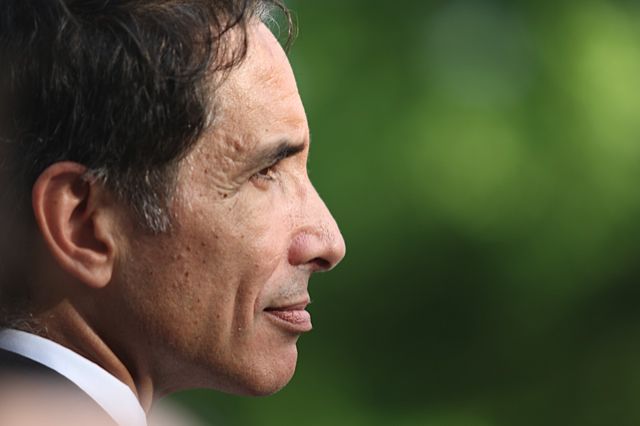By Philip Sean Curran, Staff Writer
Superintendent of Schools Stephen C. Cochrane on Tuesday outlined a bond referendum that could include a new school, a pre-school center and a three-story-addition to Princeton High School, all big-ticket items that came without a cost breakdown.
In a presentation at the school board meeting, Cochrane sought to build the case for a facilities referendum that officials are aiming to put on the ballot for September 2018. He said there is no “design at this point” but just ideas based on a needs assessment the district had done.
“We are about to embark on a transformative period in the life of our district,” he said.
In offering a rationale, he pointed to “rapidly growing enrollment” and the needs for teaching and learning in the 21st century. The high school and John Witherspoon Middle School are over capacity, by 200 and 100 students respectively, with more of them forecast to be on the way in eight to nine years, he showed. The elementary schools are at capacity, but they, too, are forecast to grow.
“We need to prepare, and we need to prepare now,” he said.
The addition at the high school would provide “flexible instructional space,” or what he called the equivalent of 12 classrooms. Having a school for fifth- and sixth-graders possibly at Valley Road School would help free up space in the four elementary schools and at the middle school, without adding on to any of those buildings, he said.
“But it allows us to sort of maintain an elementary feel to the growth of our kids even as we give them opportunities to experiment and explore,” he said in favoring a school that had an element for science, technology and art.
The school would be more than that, to include family engagement, like having a library open in the evening. Princeton board member Greg Stankiewicz, who attended a conference last week on the subject, said there are more than 2,000 community schools in 38 states.
In touching on the history of Valley Road School, the first racially integrated school in town, Cochrane said he would “love to return it to a school again and be a school that does serve the community and that honors the past even as it meets the needs of the present and the future … .”
Cochrane outlined what else the referendum could include: one or two turf athletic fields; security and HVAC improvements at all schools; and office space for central administration staff if Valley Road, where those employees work today, becomes a school again.
“We are woefully short of playing fields in this community for both (recreation) programs in the summer as well as for the scholastic programs that the school district runs,” he said.
Another possibility is “space for a future elementary school,” he said, without being certain the district will need another elementary school based on demographic studies.
The district, he said, would look at state grants as well as “alternate sources of revenue” to help defray costs.
Asked afterward about why he didn’t bring up in his presentation dollar amounts for everything, Cochrane replied, “I wanted to keep the focus on sort of design and principles and not get it undercut by cost because we still don’t know what those are.”
“What I wanted to emphasize,” he said, “was we’re going to ensure that the tax impact is a modest one.”

